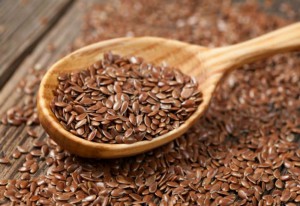What are linseed fatty acids?
Linseed fatty acids are obtained from the seed of Linum Usitastissimum. This acid has a high proportion of linolenic acid. The multiple properties of these acids provide all kinds of solutions in different industries and markets.
CAS: 68424-45-3
Other nomenclatures: LOFA
Characteristics of Flaxseed
Flaxseed is a good source of omega-3 vegetable fats, dietary fibre and other nutrients. Due to its nutritional composition, it differs from other important oilseeds such as canola or sunflower.
The flaxseed is completely flat and oval with a pointed edge. It is similar in size to the sesame seed and can measure between 4-6 mm. It has a chewy, toasted texture, but at the same time has a pleasant, nutty taste.
The colour of the seed can vary from dark brown to a rather light yellowish shade, depending on the pigmentation of the outer covering of the seed itself.
In terms of macronutrients, flaxseed is fairly low in carbohydrates, supplying 1 g per 100 g of consumption. Therefore, flaxseed contributes very little to the total intake of this macronutrient.
Flaxseed origin and fatty acid production
 The fatty acids in linseed are obtained from the splitting and subsequent vacuum distillation of linseed oil. The resulting product has a melting point of about 19ºC. It is usually obtained with a pale yellowish colour very characteristic of this type of fatty acid.
The fatty acids in linseed are obtained from the splitting and subsequent vacuum distillation of linseed oil. The resulting product has a melting point of about 19ºC. It is usually obtained with a pale yellowish colour very characteristic of this type of fatty acid.
Historically, flaxseed has been highly valued for its abundance of fats, which provide a unique blend of fatty acids. Fatty acids are a series of organic compounds that can be found in the vast majority of foods we eat. In addition, flaxseed is very rich in fat, protein and dietary fibre.
The fatty acids in linseed are obtained from the splitting and subsequent vacuum distillation of linseed oil. The resulting product has a melting point of about 19ºC.
In terms of composition, flaxseed can vary depending on the genetics of the flaxseed, the processing the seed has undergone or the environment.
Properties and applications of flaxseed fatty acids
They have multiple applications in different industries and markets thanks to their excellent properties, such as: amines, esters, betaines, fatty alcohols, lubricants, surface finishes, technical detergents, liquid and solid soaps, textile finishing, leather finishing, fibre finishing, coatings, resins, paints, inks, among many others.
Linseed fatty acids are one of the most valued oleochemical compounds in our sector. The multitude of applications where this substance can be used guarantees efficiency and quality in different functions.

The oleochemical sector is gaining a lot of followers due to the fact that it is becoming one of the most profitable and attractive alternatives for the different industrial markets. Our experience is backed by the great effort and dedication we put into the development of each and every one of our products, making us a benchmark company in the sector. We provide unequalled results to guarantee maximum satisfaction to our customers.
Flaxseed fatty acids products and presentations
Flax fatty acid: CYPACID L-80
Linseed fatty acids can be supplied in 180 kg. drums, 850 kg. containers or in bulk tanks depending on the needs and tastes of each industry. For more information, please contact us via our online form or by telephone.
| Composition of flaxseed as a food | |
|---|---|
| Fat | 41% |
| Total dietary fibre | 28% |
| Protein | 20% |
| Humidity | 7% |
| Ash | 4% |
Do you want to know now all our available acids and oils? You can easily access now from the following links:



